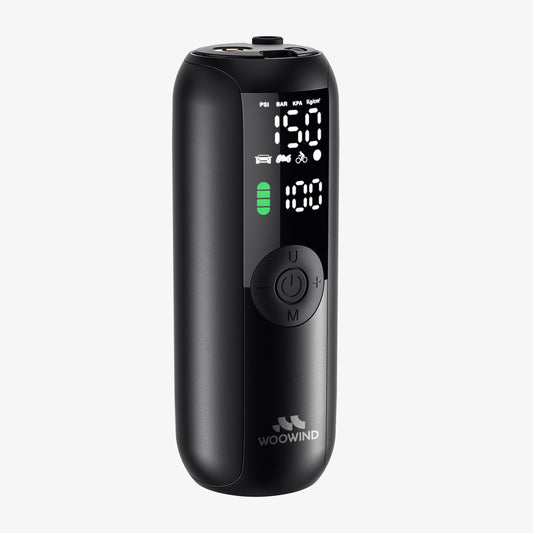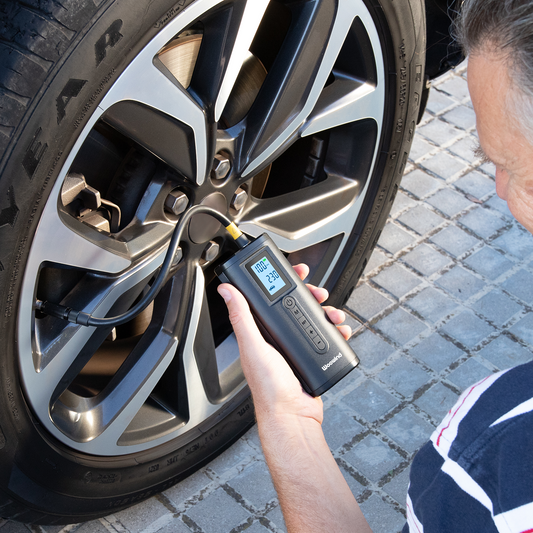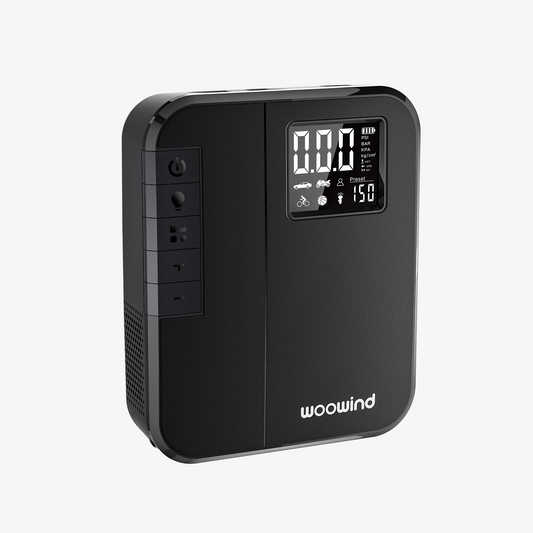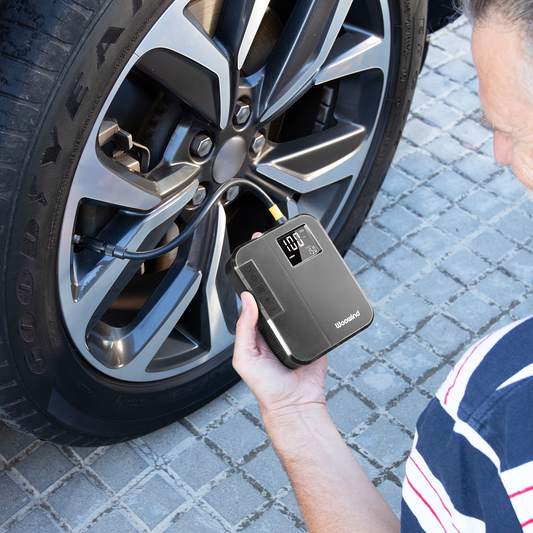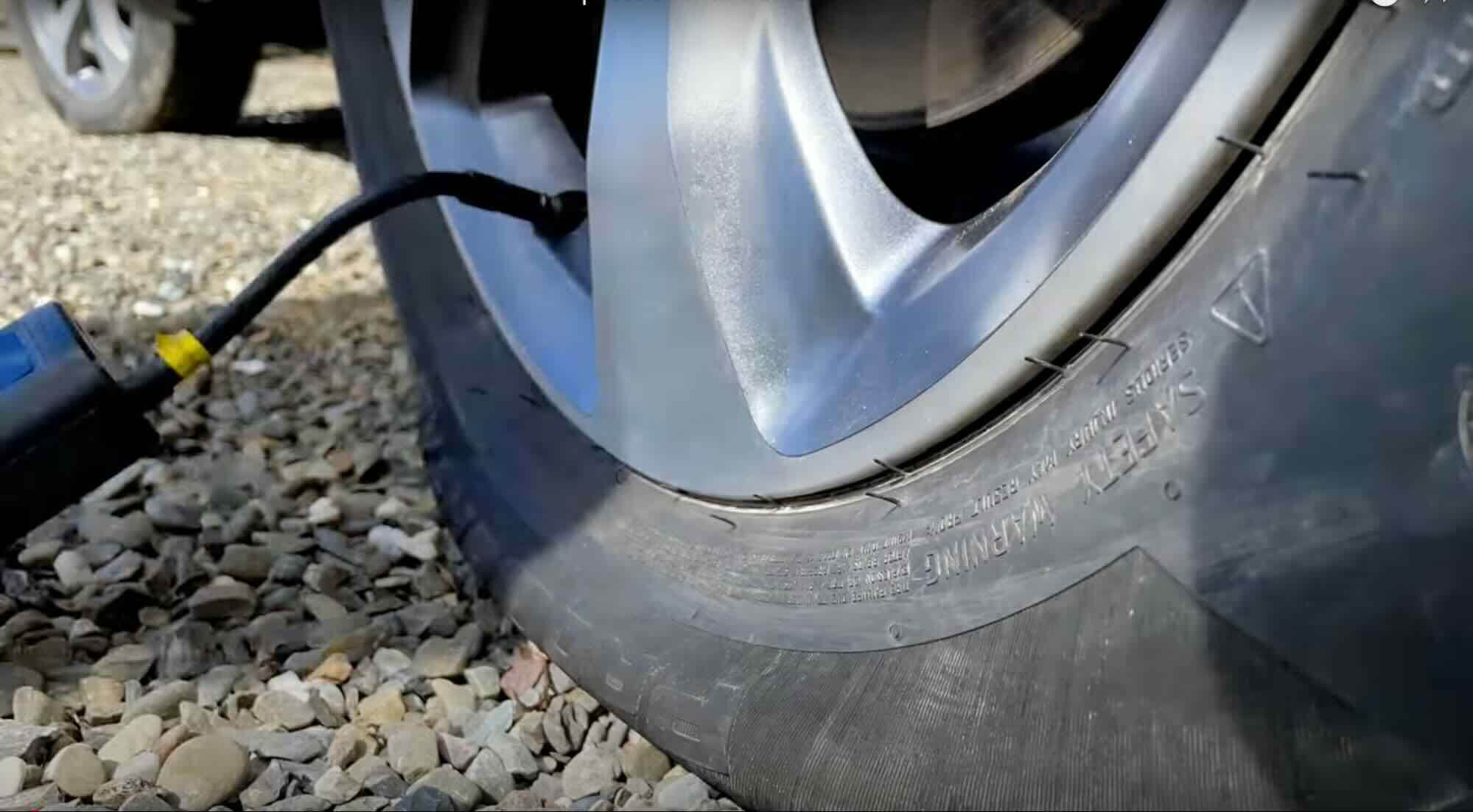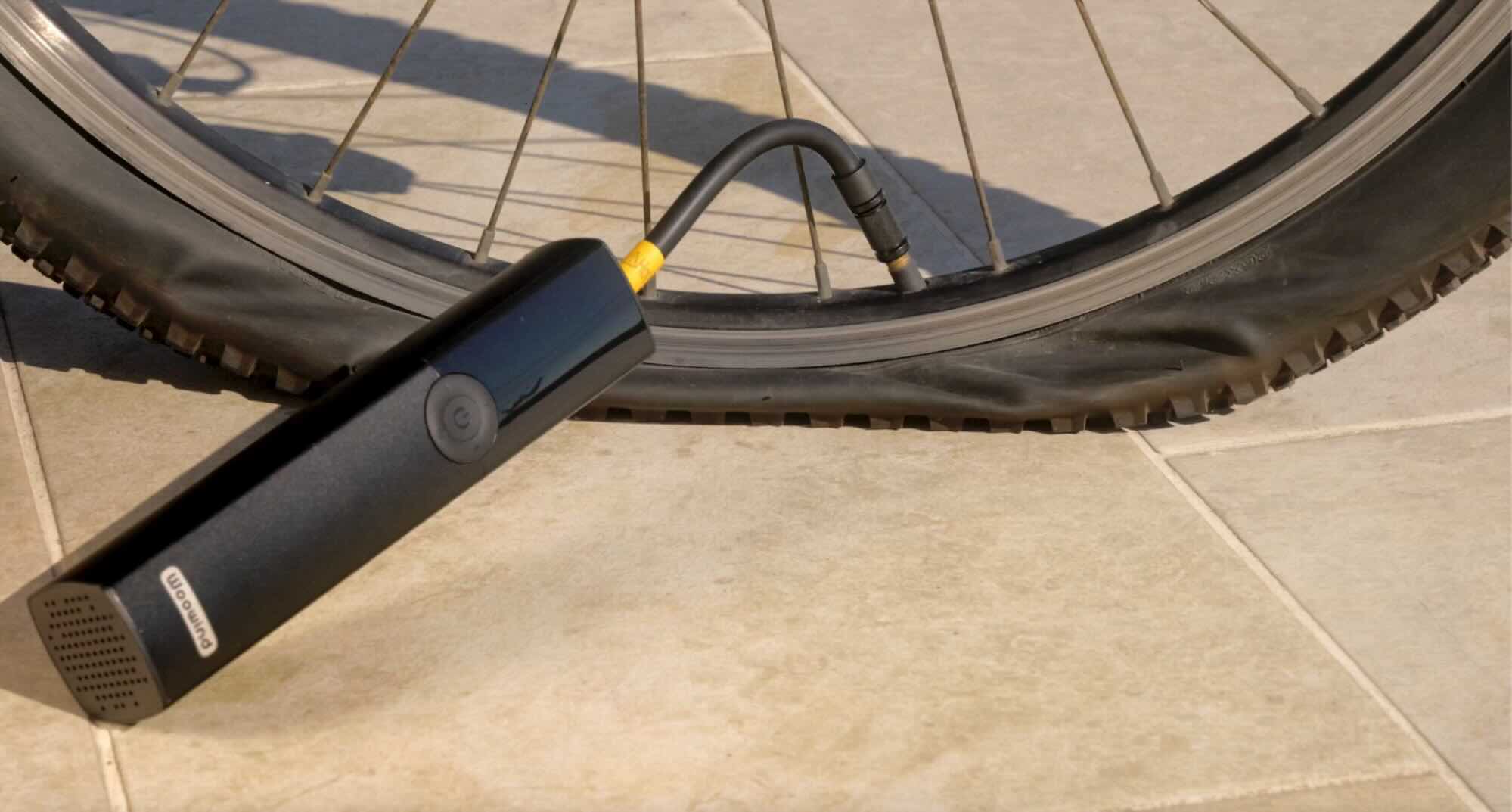
How to Use a Tire Inflator: A Complete Guide to Manual & Electric Models
Keeping your tires properly inflated isn’t just about convenience—it’s about safety, performance, and peace of mind. Underinflated tires can affect handling, reduce fuel efficiency, and even lead to unexpected breakdowns. Whether you're prepping for a road trip, ensuring your daily commute is smooth, or handling an emergency, knowing how to use a tire inflator is essential. But should you go for a manual pump or an electric inflator? This guide breaks down both options, giving you the knowledge to inflate with confidence every time.
Table of Contents
How to Use a Manual Tire Inflator
A manual inflator is simple, reliable, and doesn’t require electricity. While it demands more physical effort, it’s a great backup when power isn’t available. Here’s how to get the most out of a manual tire inflator.
Check Your Tire Pressure
Use a tire pressure gauge to determine the current PSI.
Compare it to the recommended PSI listed in your vehicle manual or on the tire sidewall.
Low pressure means increased rolling resistance, leading to faster wear and reduced efficiency.
Connect the Pump to the Tire Valve
Ensure a tight seal to prevent air leaks.
If your pump has a Presta valve, use an adapter for Schrader valves.
A secure connection ensures every pump counts.
Begin Pumping
Use steady, controlled strokes to push air into the tire.
Monitor the pressure gauge frequently to prevent overinflation.
Expect to spend extra time inflating larger tires—manual pumps require patience.
Stop at the Correct PSI
Remove the pump carefully to avoid releasing excess air.
Secure the valve cap to protect against dirt and moisture.
Press the tire lightly with your hand—firm but slightly flexible is ideal.
Manual inflators are useful for emergency situations, but if you want a more efficient solution, consider using an electric air pump for faster inflation and precision.
How to Use an Electric Tire Inflator
An electric inflator offers precision, speed, and convenience—perfect for everyday use or roadside emergencies. Here’s how to use one properly.
Power the Inflator
Cordless models: Ensure the battery is charged.
12V inflators: Plug into your vehicle’s power outlet.
Always check battery life before a long trip to ensure reliability.
Attach the Nozzle Securely
Connect the inflator’s nozzle to the tire valve.
A proper seal prevents air leaks and ensures accurate inflation.
If you hear hissing, readjust the connection.
Set the Target PSI
Use the inflator’s digital display or manual dial to set the desired PSI.
Overinflation can affect handling, so refer to manufacturer guidelines.
Start the Inflation Process
Press the power button and let the inflator work automatically.
Many models feature an automatic shut-off to prevent overinflation.
Keep an eye on the gauge to ensure a smooth process.
Remove the Inflator and Secure the Valve Cap
Double-check the pressure with a gauge if necessary.
Store the inflator properly to keep it ready for the next use.
Recharge cordless models after use to avoid low battery surprises.
If you frequently drive SUVs or larger vehicles, using a specialized SUV air pump can ensure optimal tire performance and durability.
Manual vs. Electric Tire Inflators: Key Differences
| Manual Infaltor | Electric Inflator | |
| Effort Required | High | Low (automatic) |
| Inflation Speed | Slow | Fast |
| Power Source | None (manual) | Battery or 12V car outlet |
| Ideal For | Emergencies, off grid use | Everyday convenience, quick inflation |
| Precision | Manual gauge | Digital PSI control |
Safety Best Practices for Using a Tire Inflator
Avoid overinflation—higher PSI doesn’t mean better performance.
Ensure a tight valve connection to prevent leaks and inaccurate readings.
If using an electric inflator, monitor battery life to prevent unexpected failures.
Inflate tires in a safe location away from traffic.
Allow the inflator to cool between multiple inflations to prevent overheating.
Always check PSI levels before long trips to avoid last-minute surprises.
For those who rely on their scooter for daily commuting, using a dedicated scooter air pump can keep rides smooth and efficient.
Why Tire Maintenance Matters
Tire pressure plays a crucial role in vehicle performance and fuel efficiency. Regular checks can help you avoid unnecessary wear and tear. If you’re an e-bike rider, following these e-bike maintenance tips can enhance the longevity of your tires and battery life.
Additionally, for those planning long trips, understanding how tire pressure affects long-distance travel can help prevent roadside issues and ensure a comfortable drive.
When inflating your tires, knowing where to find a reliable air source is essential. If you need guidance, check out our guide on where to get air for your tires to find the best locations near you.
Final Thoughts: Choosing the Best Inflator for Your Needs
Your tires are the foundation of your ride. Whether you choose a manual pump for emergency use or an electric inflator for everyday convenience, proper inflation ensures safety, efficiency, and a smooth journey. Investing in a reliable inflator means fewer surprises on the road and more time enjoying the drive.
FAQs
How often should I check my tire pressure?
At least once a month and before long trips. Consistent checks improve fuel efficiency and extend tire life.
Can a manual inflator fully inflate a car tire?
Yes, but it requires significant effort and is best for emergencies.
What’s the ideal PSI for different vehicle types?
Passenger cars: 30-35 PSI
Bikes: 40-100 PSI (depending on tire type)
Motorcycles: 28-40 PSI
Is it safe to leave an electric inflator unattended?
No. Even with an automatic shut-off, it’s best to monitor the process.
How long does it take to inflate a tire with a manual vs. electric inflator?
Manual: 10-20 minutes per tire.
Electric: 1-3 minutes per tire.
Stay prepared. Stay in control. Inflate with confidence.


